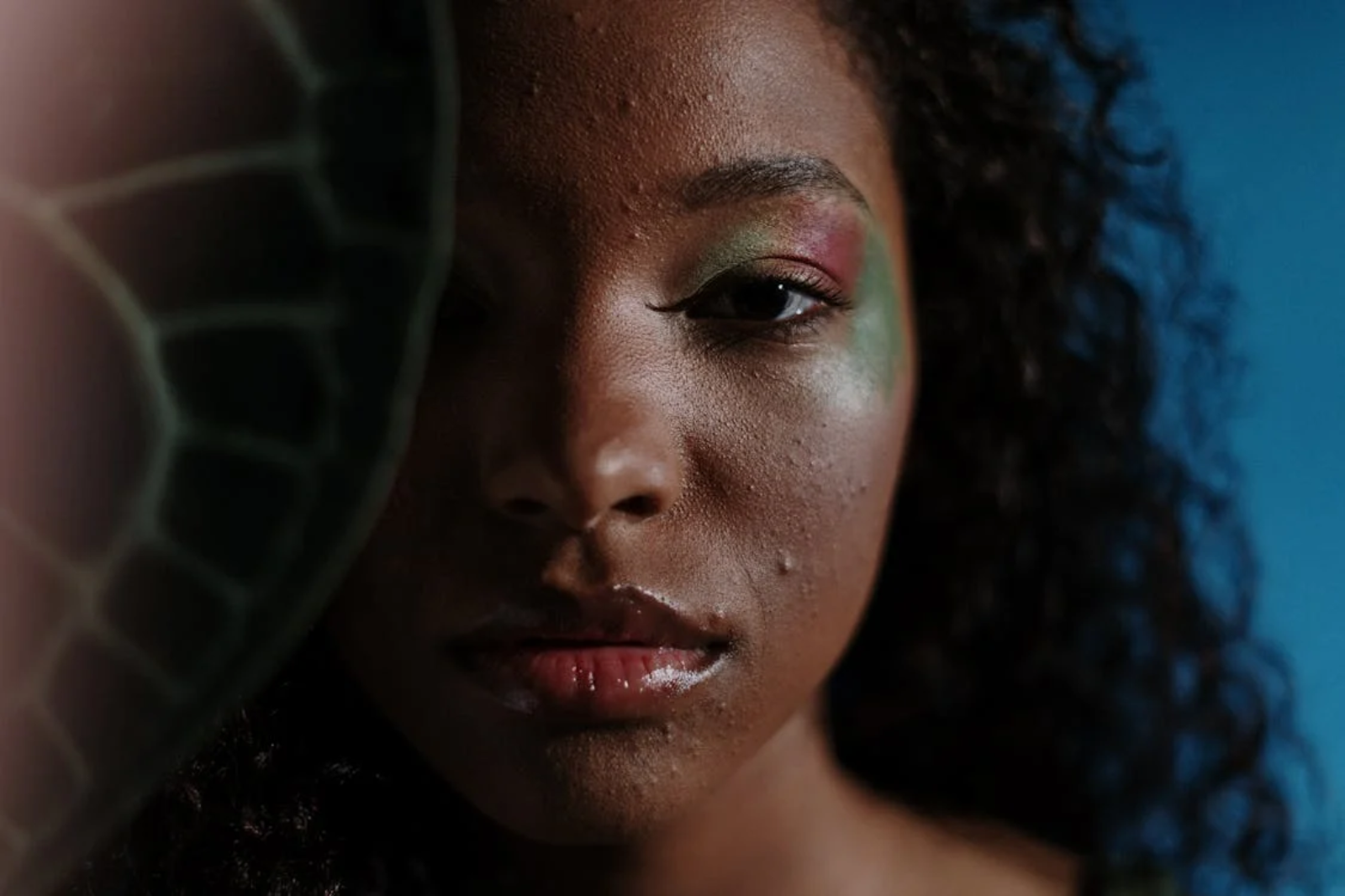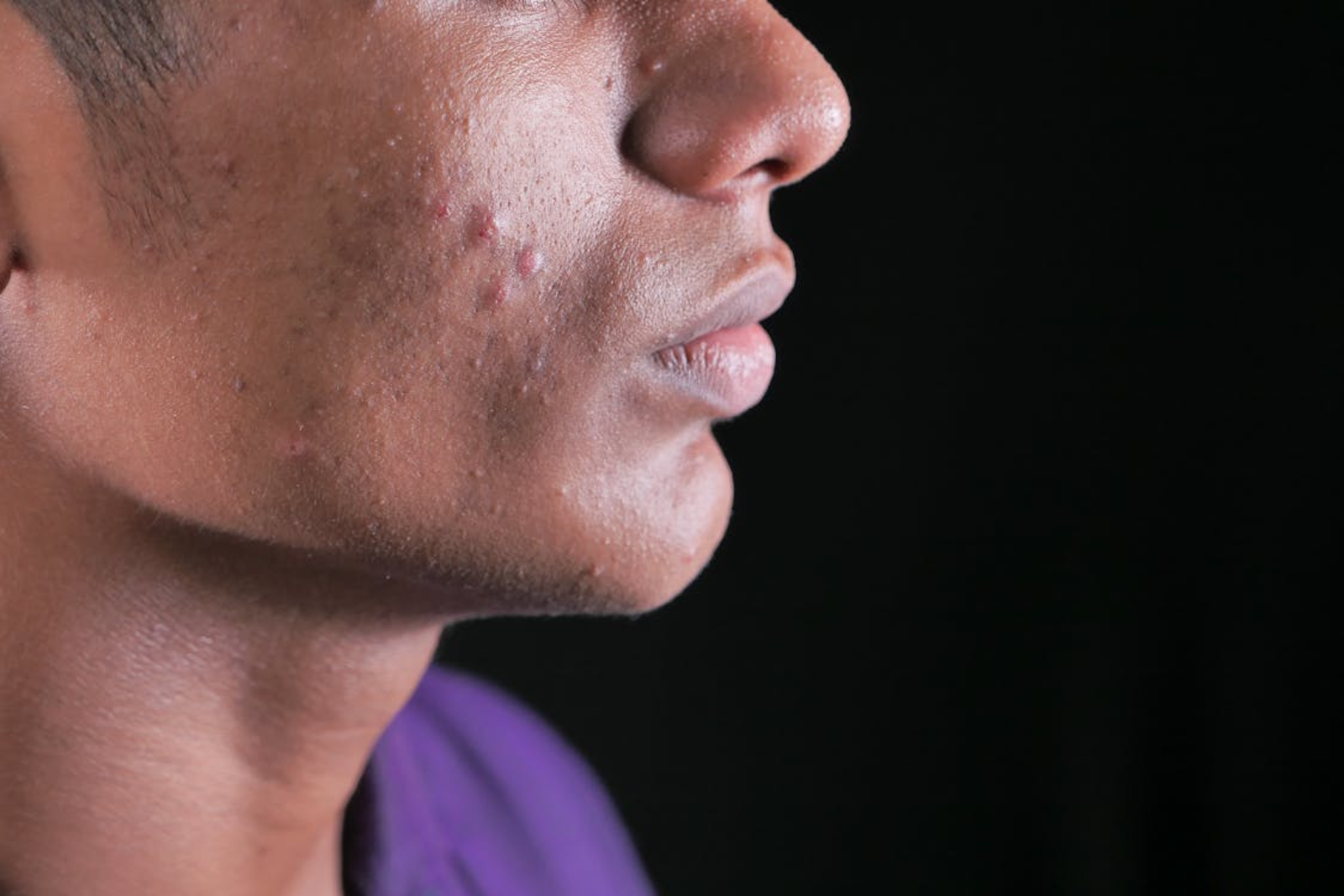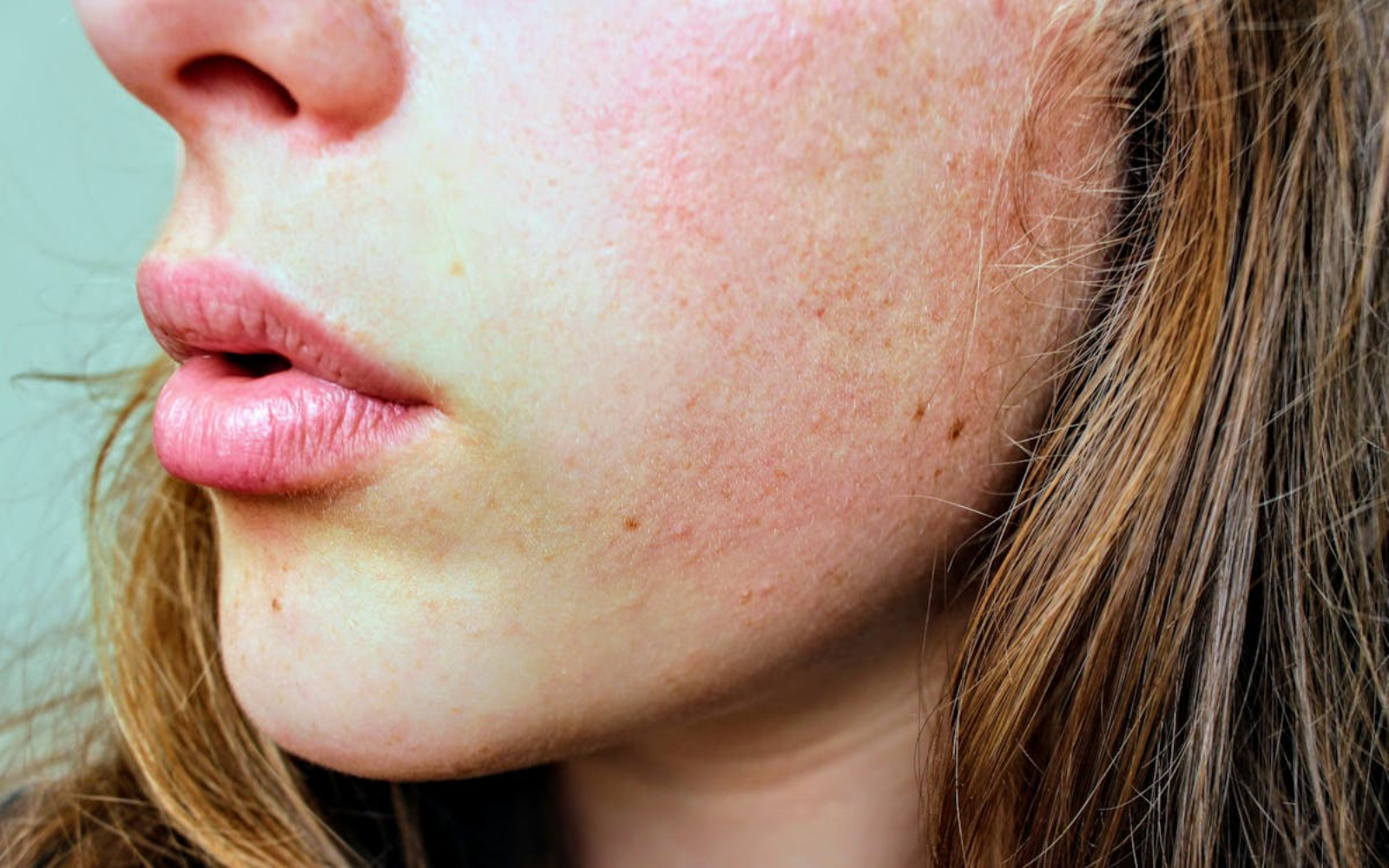
12 Small Bumps on Your Skin That Aren’t Acne
By Sadia | Wednesday, June 4, 2025
Have you ever noticed these weird bumps on your face that resembled acne but weren't? Well, you are not alone — a lot of people misjudge these bumps for pimples, forgetting that not all bumps on face not acne. In fact, there are several skin conditions that can lead to similar-looking effects, and understanding their differences can help you save time, frustration, and unnecessary treatments.
Face yoga for bumps on face : https://www.faceyogi.health/blog/category/face-yoga
While most of these bumps are harmless and do clear up on their own eventually, there are a few bumps that act as a spotlight for underlying issues that demand medical attention. This is why it is crucial to recognize when a bump is just a minor skin concern and when it might be time to visit a dermatologist.
Want to know what that bump on your face represents? Great, since we will be walking you through twelve common types of facial bumps that surprisingly aren’t acne, plus what they look like, why they appear, and how you can treat them. Just by understanding these conditions, you will be better equipped to care for your skin and know the signs when to seek professional help.

12 Types of Facial Bumps That Aren’t Acne
1. Sebaceous Hyperplasia
This is one of the more common skin conditions and causes small, yellow or brown bumps on the face. Sebaceous hyperplasia bumps are actually enlarged oil glands and often have a noticeable central dent or depression. These tend to appear on the forehead, cheek, and nose and can easily be mistaken for acne or other skin issues.
It is particularly common in older adults, because the hormonal changes over time can cause the oil glands to enlarge, while sebaceous hyperplasia is harmless and doesn’t cause any pain, a lot of people find them bothersome, partially because of how they look. If you are dealing with bumps on face not acne, and suspect it might be sebaceous hyperplasia, then there are a few different treatment options available, i.e., laser therapy, cryosurgery, or surgical removal.
2. Milia
Milia are small, white, smooth bumps commonly seen around the eyes and cheeks — they appear as little white pearls just beneath the skin’s surface and are easily mistaken for acne. However, milia are actually small cysts caused by trapped dead skin cells that weren’t properly shed.
These bumps on face not acne, aren’t painful or itchy, and usually go away on their own without any treatment. Nonetheless, if these persist or are bothering you, gently exfoliating can help speed up the process by stimulating skin cell turnover. Topical retinoids, which encourage skin renewal, are also commonly used to treat milia and prevent new ones from occurring.
Also, because milia are harmless, it is best to avoid picking or squeezing them since these actions can lead to irritation or even infection. If you are unsure of whether the bumps on your face are milia or not, consulting with a dermatologist can provide clarity and help you guide through the best skin care routine.
3. Syringomas
Syringomas are small, flesh-colored or yellowish bumps that usually occur near the eyes. They result from an enlarged sweat gland duct, and they appear in groups. They may appear similar in appearance to acne or other conditions, but syringomas represent a different kind of benign growth.
Although syringomas are not painful and will never cause you any discomfort, most individuals find them intrusive due to the way that they look. If you’ve observed these bumps on face not acne, on and near your eyes, then syringomas may be the explanation. They rarely need treatment unless you wish to remove them for aesthetic reasons.
For individuals looking for removal, laser therapy, electrosurgery, and chemical peels are available options. It is always ideal to visit a dermatologist for confirmation of the diagnosis and for identifying the safest and most efficient treatment options according to your skin type and issues.

4. Molluscum Contagiosum
The viral skin disease molluscum contagiosum produces firm, dome-shaped pimples that have a characteristic central dimple. The small, bead-like pimples frequently occur in groups and affect children most often, though adults may contract them as well. The pimples are harmless and painless, often disappearing in several months to years.
While molluscum contagiosum usually resolves on its own, individuals may choose to visit the doctor if the bumps are numerous or in areas that are sensitive, such as the face. Methods for treatment include cryotherapy (freezing the bumps), creams applied topically, or small procedures from a dermatologist. The methods can accelerate healing, however, and may result in some discomfort, as well as scarring.
If you find you have bumps on face not acne and are smooth, firm, and dome-shaped with a central dimple, molluscum contagiosum may be the source. It is infectious through skin contact; however, keeping the bumps covered and ensuring good hygiene can prevent its passing. Visiting a medical expert can give the most advice on how best to handle the condition.
5. Impetigo
Impetigo is an extremely common bacterial skin condition that forms red sores, usually near the mouth and the nose. It causes the sores to break open, ooze, and become covered in yellowish-brown crust, giving them the prominence that makes them hard to miss. It can be mistaken for acne, but the sores are really contagious and can easily infect others.
The infection is mostly common in children, but it may infect anyone at any age. Due to its contagious nature, it spreads through close contact or via touching contaminated objects. You should maintain the infected area as clean as possible and refrain from scratching in order not to infect other persons or other body parts.
The good news is that impetigo can be treated with antibiotics, either in the form of topical creams or oral medication from a doctor. If you experience recurring or worsening sores that aren't the typical kind of acne, it is best that you visit a healthcare provider for an accurate diagnosis and treatment.
6. Keratosis Pilaris
Keratosis pilaris is one of the most common skin conditions, and causes small, rough-looking bumps that often affect the cheeks, arms, or thighs. The small, sandpaper-like bumps may be confused with acne, yet it is actually the result of the blocking of the hair follicles by the buildup of keratin, an important protein that helps protect the skin.
Although keratosis pilaris is not dangerous or contagious, it can be irritating due to its feel and appearance. The good thing about this is that it can be managed through proper skin care. Moisturizing keeps the skin well-hydrated, while gentle exfoliating procedures can help eliminate dead skin cells and soften the bumps.
Have you noticed bumps on face not acne, that are rough in texture instead of red or inflamed? You may be experiencing keratosis pilaris. Consistency is the key in dealing with this condition, and with proper treatment, you can smooth out your complexion and be more confident in your skin.
7. Cysts
Cysts are closed, fluid- and/or pus- or other substance-filled tissue pockets that may occur anywhere on the skin, including the face, and may appear as small, smooth, circular swellings on the surface. Some may be painless and harmless, while others may become red, tender, and inflamed.
Bumps on the face that are not acne and feel like firm or soft lumps may be cysts. They may become larger at times or be painful if the inflammation occurs. Avoid popping or squeezing them in such cases, as it may result in scarring or infection.
Treatment for the cyst depends on its size and severity. Some may disappear on their own, while difficult-to-treat cysts may need drainage or surgical removal with the help of a dermatologist. If you're unsure about any lump on your skin, the best course of action is to see a healthcare provider for an accurate diagnosis and treatment.
8. Xanthelasma
Xanthelasma looks like yellowish, soft deposits of fat that usually appear around the eyelids. While these bumps are harmless, they do act as a sign of high cholesterol levels, making it necessary to get your lipid profile checked if you start noticing them.
Its treatment options include lifestyle changes and medication to lower cholesterol, which can also help in preventing new deposits. Also, surgical removal and laser treatment are available for cosmetic reasons. If you notice these yellow bumps near your eyes, then it might be time to consult a healthcare professional.
9. Moles
A mole is a common type of skin growth, either flat or raised, in any color, ranging from pale brown to black. In most cases, they are harmless and won't trouble anyone, yet they need monitoring for size, color, and form changes.
If the growth is inconvenient or begins to change, it is safe to remove it for both cosmetic and medical purposes. Having periodic skin examinations and seeing a dermatologist will help maintain your skin in good health and provide peace of mind.
10. Seborrheic Keratosis
These ordinary, harmless growths usually appear as warts and may occur anywhere on the body. They're typically scaly and waxy in appearance, and may be brown, black, or light tan in color. Although Seborrheic keratosis may give the impression that there is something wrong, they're harmless and painless.
Removal is most commonly an optional decision, performed primarily for aesthetics. If these growths annoy you or become discolored, a dermatologist can remove them in a safe manner and examine them for anything deeper. Frequent monitoring of the skin keeps it comfortable and healthy.
11. Skin Cancer
There are a few serious conditions, such as basal cell carcinoma, squamous cell carcinoma, and melanoma, that can show up as new growths, sores that don’t heal, or changes in existing spots on your skin. These changes might look like ordinary bumps or patches, which can result in people mistaking them for harmless skin issues.
Tackling these conditions early on is key to effectively treating them and achieving a deal outcome. If you see any unusual or persistent changes on your skin, then it is critical to see a healthcare professional as soon as possible.
12. Folliculitis
Folliculitis is an inflammation of the hair follicles, resulting in red, pimple-like bumps, which might be itchy or painful. They look very much like acne, but result from bacterial or fungal infections, and can occur anywhere hair grows, such as on the face, scalp, or the back of the neck. In some cases, the area might become crusty and tender.
Proper hygiene is critical for prevention and treatment. Cleaning the skin, not wearing tight clothing, and using fresh razors will help minimize irritation and prevent the risk of infection. In the case of minor cases, warm compresses and topical antiseptics should suffice, while more chronic or advanced folliculitis may call for antibiotics or antifungal medications from a medical professional.
If you experience ongoing, uneasy bumps that won't clear up with simple care, it is best to seek advice from a dermatologist. Having them treated early on can prevent problems and keep your skin healthy and comfortable.

Differentiating Acne from Other Bumps
In most cases, acne tends to show up as blackheads, whiteheads, or inflamed bumps like papules and pustules. Unfortunately, there are a few other skin conditions that can look similar to acne but have distinct causes and require different treatments. If you notice your bumps are not responding to typical acne care solutions or have some unusual features, then it might be something else entirely.
When to See a Dermatologist
If you have bumps on face not acne that won’t go away after a few weeks, then it might be a good idea to see a dermatologist. Similarly, if you notice any bumps growing quickly, bleeding, or changing color, a professional evaluation will become necessary. You can also use handy tools like the FaceYogi app to figure out the type of skin condition you are dealing with, as these early diagnoses guarantee that you get the right treatment and have a peaceful mind during it.
Conclusion
Although there are a few facial bumps that resemble acne, they have different causes and treatments. Understanding these differences can be vital for finding effective solutions and care. Also, for accurate diagnosis and personalized treatment, don’t be afraid to reach out to a dermatologist. Have a specific problem that needs a solution? Visit FaceYogi and discover a plethora of guides and solutions catered to all your skincare needs.
References
Geist, R., & Crane, J. S. (2025). Syringoma. In StatPearls. StatPearls Publishing.
Milia. (2023, September 6). Cleveland Clinic.
Molluscum contagiosum. (n.d.). Mayo Clinic. Retrieved May 21, 2025.
Sebaceous hyperplasia. (2023, August 23). Cleveland Clinic.
Seborrheic keratosis. (n.d.). Mayo Clinic. Retrieved May 21, 2025.
Xanthelasma. (2022, July 1). Cleveland Clinic.






